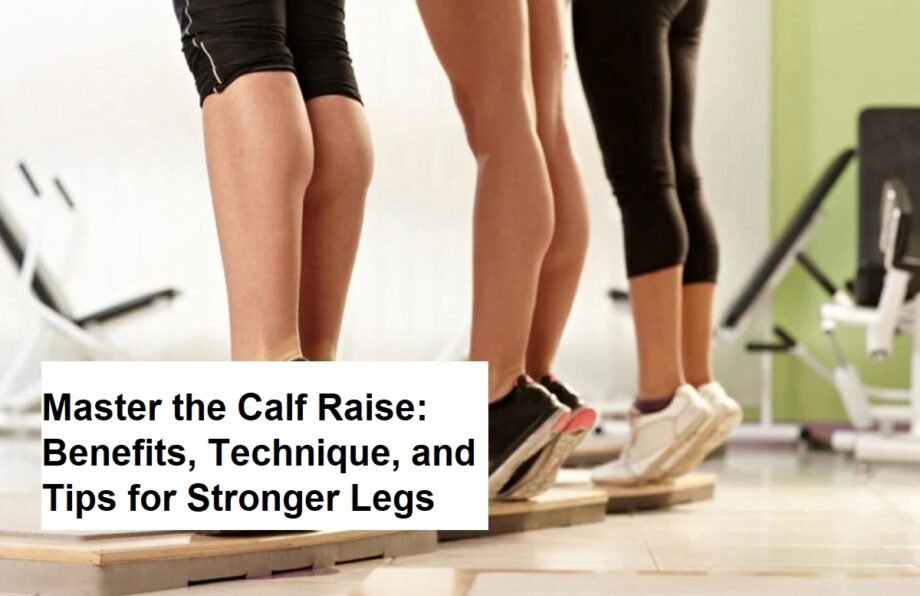Introduction
Calf raises are a fundamental exercise targeting the calf muscles, which play a crucial role in mobility, balance, and overall leg strength. Whether you’re an athlete, fitness enthusiast, or just starting your workout journey, understanding how to perform calf raises correctly can enhance your lower body strength and prevent injuries. This article explains what calf raises are, their benefits, and provides step-by-step guidance on how to do them effectively.
What Is a Calf Raise?
A calf raise is an exercise that involves lifting your heels off the ground while standing, which contracts the calf muscles—primarily the gastrocnemius and soleus. This movement strengthens these muscles, improves ankle stability, and supports activities such as walking, running, and jumping.
Calf raises can be performed using just your body weight or with added resistance like dumbbells or a calf raise machine.
Benefits of Calf Raises
- Improves Lower Leg Strength Strong calves contribute to improved power and endurance in your legs, aiding in activities like running, cycling, and climbing stairs.
- Enhances Balance and Stability Calf muscles are essential for maintaining balance during standing and dynamic movements. Regular calf raises improve proprioception and reduce the risk of falls.
- Supports Ankle and Foot Health By strengthening the muscles and tendons around the ankle, calf raises help prevent injuries such as sprains and strains.
- Aids Athletic Performance Athletes benefit from calf raises as the exercise increases explosiveness, jumping ability, and sprint speed.
- Aids in Rehabilitation Calf raises are commonly included in rehabilitation programs for Achilles tendon injuries and other lower leg issues.
How to Do Calf Raises Correctly
Follow these steps to perform a standard standing calf raise:
- Starting Position Stand upright with your feet hip-width apart. You can place your hands on a wall or hold onto a stable surface for balance.
- Lift Heels Slowly Raise your heels as high as possible by pushing through the balls of your feet. Keep your core engaged and avoid leaning forward or backward.
- Pause at the Top Hold the raised position for 1-2 seconds to maximize muscle contraction.
- Lower Heels Gently Slowly lower your heels back to the starting position, controlling the movement to avoid dropping abruptly.
- Repeat for Sets and Reps Perform 3 sets of 12 to 15 repetitions. As you progress, increase repetitions, add weights, or try variations like single-leg calf raises.
Variations of Calf Raises
- Seated Calf Raise:Targets the soleus muscle more by performing raises while seated with weights on the knees.
- Single-Leg Calf Raise:Focuses on balance and isolates each calf for strength imbalances.
- Weighted Calf Raise:Use dumbbells or a barbell to increase resistance for muscle growth.
- Calf Raise Machine:A gym machine designed to target calves with adjustable weights.
Tips for Safe and Effective Calf Raises
- Warm up before performing calf exercises to prevent strains.
- Maintain a controlled pace—avoid rushing through reps.
- Keep your ankles aligned to prevent strain or injury.
- Stop if you feel pain beyond normal muscle fatigue.
- Incorporate calf stretches after your workout to maintain flexibility.
Conclusion
Calf raises are simple yet highly effective exercises essential for building lower leg strength, improving balance, and supporting overall mobility. By incorporating them into your workout routine with proper form and progression, you can enjoy numerous benefits from enhanced athletic performance to injury prevention. Follow the detailed steps and safety tips provided to maximize your results. Strong calves lead to a stronger, more stable foundation for your daily activities and fitness goals.









